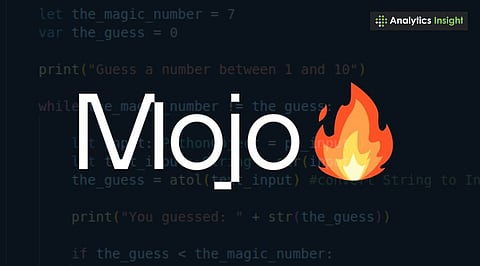

Mojo combines Python simplicity with the speed of C and Rust for AI tasks.
Integrated AI optimizations make training and deployment faster and more efficient.
A growing community and libraries support smooth adoption for developers.
Programming is constantly changing, and a new language called Mojo is starting to catch attention. Developed by Modular Inc., Mojo is designed to give the simplicity of Python with the speed of languages like C and Rust. This combination makes it interesting for programmers working on artificial intelligence, machine learning, and performance-heavy applications.
Mojo has been designed for developers needing the most powerful tool to connect AI high-level work and systems programming, from low-level to high-performance programming. Mojo preserves the clean and simple syntax that has made Python very readable, so it is easy to jump into Mojo if you have already written software in Python, without skipping a beat.
The fantastic thing is, Mojo offers performance on par with C or Rust, making it an ideal choice for systems programming and AI simultaneously.
Python-like syntax: Mojo keeps Python's clean and simple style for easy readability.
Statically typed: Mojo provides static typing to avoid bugs, checks for errors before running your program, helps you program more effectively, and speeds up code execution.
Memory safe: Mojo has a reliability system in place that stops bad memory usage with low disruption to programming, like Rust.
Manual memory management: Mojo supports manual memory management, similar to C++, to manage memory effectively and maximize performance when needed, particularly in memory-critical sections of code.
Zero-Cost Abstractions: High-level code turns into fast machine code without slowing down programs.
Integrated Auto-Tuning: Mojo can automatically adjust to run efficiently on various hardware, including GPUs and TPUs, ensuring optimal performance.
Also Read: Mojo vs Rust: Which Will Lead Software Development in 2025?
Mojo is made for AI. Using the MLIR compiler, it can prepare AI programs to run on different hardware ahead of time. This means that AI models can operate efficiently across multiple devices without requiring additional effort. Heavy tasks, such as training machine learning models, become faster and use fewer resources.
Mojo is growing in the developer world. Modular Inc. has made its library open-source, allowing contributions. This helps improve the language quickly and encourages the generation of new ideas. Tools like the Mojo SDK and a Visual Studio Code extension make it easy for developers to integrate Mojo into their projects.
People who started using Mojo noticed big speed improvements over Python for AI tasks. Tasks like tensor operations run faster, which reduces the time needed for training models. Mojo also works with existing Python libraries, allowing old code and knowledge to be leveraged while programs run faster.
Also Read: Should You Learn Mojo or Stick with Python in 2025?
As the need for fast AI grows, languages like Mojo, which are both simple and powerful, are becoming increasingly important. Its Python-style coding, performance features, and growing community make it a strong choice for AI projects. More programmers are trying Mojo, and its role in AI development is likely to increase.
Mojo combines Python’s simplicity with the speed of low-level languages. This makes it helpful in building fast and efficient AI programs. Its adoption is increasing, and it could change how AI projects are made in the future.
1. What makes Mojo different from Python and C?
Mojo combines Python’s easy syntax with C-level speed, offering fast, efficient coding for AI and system-level tasks.
2. Is Mojo suitable for AI and machine learning projects?
Yes, Mojo is optimized for AI workloads, making tasks like model training faster and more resource-efficient.
3. Can Python developers easily learn Mojo?
Yes, Mojo keeps Python-style syntax, so Python developers can start coding quickly without steep learning curves.
4. Does Mojo support advanced memory management?
Yes, it allows manual memory control like C++ and offers memory safety like Rust for reliable, high-performance code.
5. How is Mojo’s community and ecosystem growing?
Mojo has an open-source library, SDK, and VS Code extension, enabling easy adoption and community contributions.
